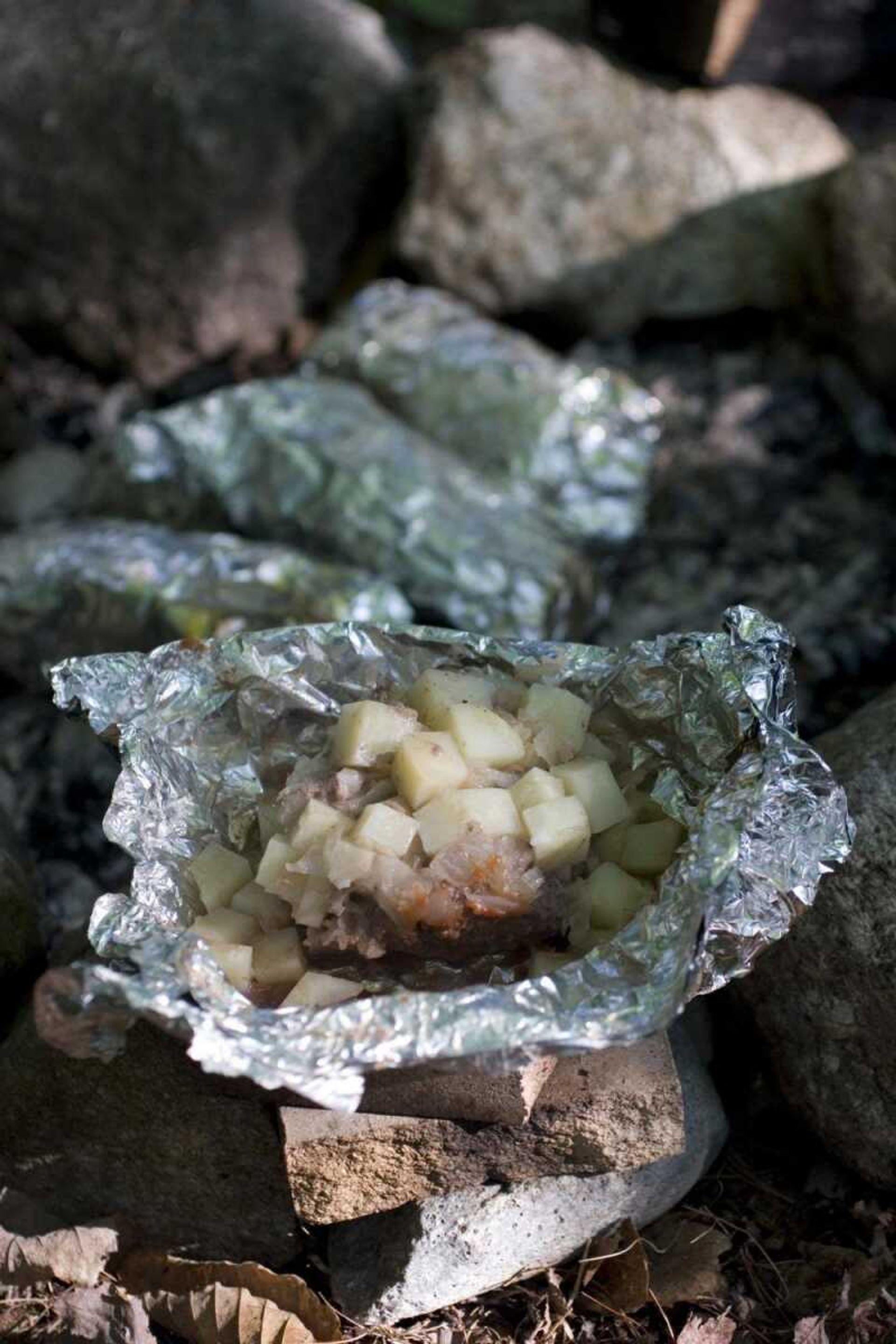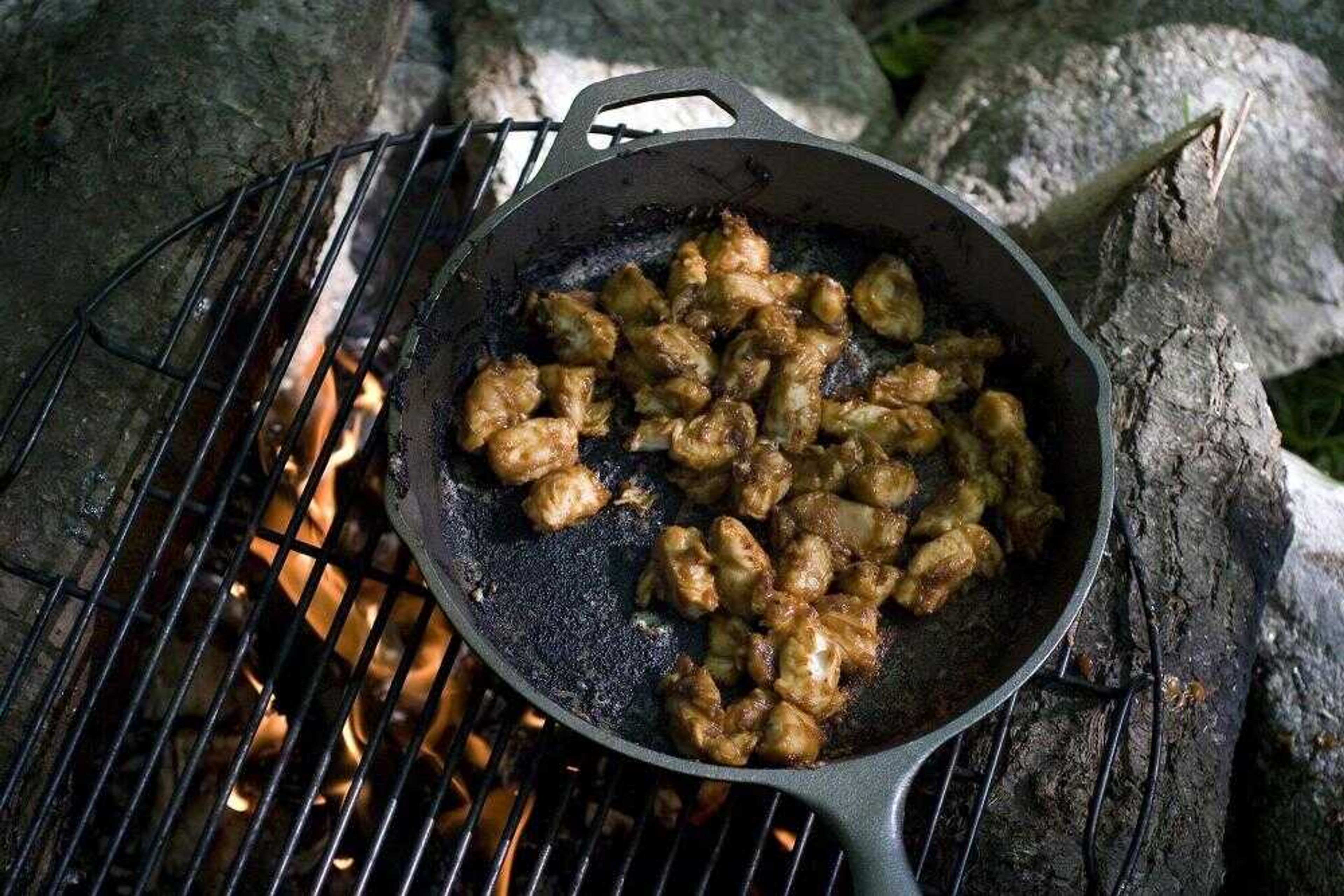If hot dogs and hamburgers don't inspire you to hit the hiking trail and pitch a tent, how about sausage jambalaya bubbling over the campfire followed by hot berry cobbler?
It's possible, it's easy and it's fast. Thanks to improvements in camping cooking gear and a bounty of easy-prep and in-store ingredients, the days of settling for the utilitarian campfire cooking of yesteryear are gone.
"There is almost nothing you can't do on the trail," says Don Philpott, who with wife Pam wrote "The Trailside Cookbook" and is a fan of campfire jambalaya. "People don't think you can have a three-course meal around the campfire."

The trick to making that happen is forethought -- getting the right equipment and prepping ingredients before you leave home.
First, the equipment. The key is to keep it light. Though cast-iron pans offer campfire cachet, you wouldn't want to hike with one on your back. Reserve those for camping in which you will drive to your tent site. The rest of the time stick with aluminum.
And choose just one versatile pan.
Don Jacobson, author of campfire cookbook "The One Pan Gourmet," says that with just a frying pan and utensils, he can cook walnut chicken, stir-fry and coconut fruit cups. If he brings the Dutch oven instead, he can turn out lasagna or hot berry cobbler.
The Dutch oven -- which can serve as a griddle, a cook pot or an oven -- is a favorite, especially now that newer, lighter aluminum models offer a packable alternative to the more common cast-iron behemoths.
When a campfire isn't an option, camping stoves are the way to go. Single-burner stoves can weigh less than a pound. Most run on white gas (sometimes called camp fuel) or butane and can handle anything from pasta to stir-fry to stew.
"Why are we going out in the first place? Because it's better than being at home," said Jacobson, who became a campfire gourmet after eating one too many boring meals while leading Boy Scout expeditions. "Why would you take that wonderful experience and ruin it by having a bad meal?"
With the gear settled, focus on the food. For people hiking, canoeing or otherwise expending more energy than usual, meals should be planned around supplying those extra calories.
The menu also will depend on the type of camping. Staying put at a state park allows campers to lug more and heavier gear (including coolers) and food than a backcountry trek from tent site to tent site.
Most good camping cookbooks suggest menus to help with this. In Philpott's book, for example, a four-day menu under the "Pack Light" section includes bacon and eggs, pizza, stew, pasta, chocolate fondue and lemon couscous.
Emily Mitchell, an education programs coordinator for the Appalachian Mountain Club, says learning which foods pack and keep well under camping conditions is essential. As is learning the correct order in which to eat them.
Fresh peppers and spinach, for example, are delicate and so should be eaten early in the trip. But hard cheeses, carrots and potatoes will keep longer and can be saved for later.
And try to select foods that do double duty, such as pita bread. Mitchell says pita rounds not only can be used for sandwiches, but also make great pizza dough.
Jacobson and Philpott suggest packing only what is needed for each menu, which means transferring spices (a must) and oils into smaller containers (taking just what is needed for recipes). Restaurant-style condiment packets also are a great idea.
If ingredients can be mixed ahead at home, do it. Soups, for example, could be made ahead at home, then divided into zip-close plastic bags and frozen. These are easy to thaw and reheat, plus they help keep other foods cool in the meantime.
Connect with the Southeast Missourian Newsroom:
For corrections to this story or other insights for the editor, click here. To submit a letter to the editor, click here. To learn about the Southeast Missourian’s AI Policy, click here.








